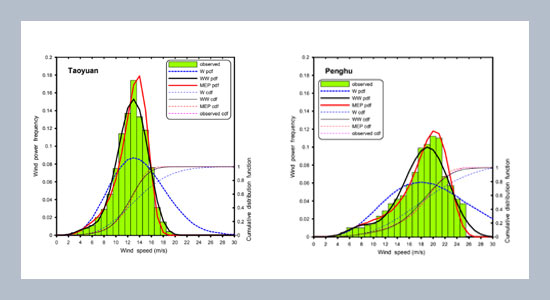Tian Pau Chang1 Department of Computer Science and Information Engineering, Nankai University of Technology, Taiwan, R.O.C.
Download Citation:
|
Download PDF
Wind resource is important part of the utilization of renewable energy. To effectively estimate the wind energy potential for a given area, a variety of probability density functions (pdf) have been available in literature. In this paper, the bimodal mixture Weibull function (WW) and the probability function derived with maximum entropy principle (MEP) will be used and compared with the conventional Weibull function. Wind speed data measured at three wind farms experiencing different climatic environments in Taiwan are selected as sample data to test their performance. Judgment criterions include four kinds of statistical errors, i.e. the max error in Kolmogorov-Smirnov test, Chi-square error, root mean square error and relative error of wind potential energy. The results show that the proposed WW and MEP pdfs describe wind characterizations better than the conventional Weibull pdf, irrespective of wind speed and wind power density data, particularly for a location where wind regime presents two humps on it. For wind speed distributions, the WW pdf describes best according to the Kolmogorov-Smirnov test; while for wind power density, the MEP pdf outperforms the others.ABSTRACT
Keywords:
wind speed; wind power density; probability density function
Share this article with your colleagues
REFERENCES
ARTICLE INFORMATION
Accepted:
2010-09-07
Available Online:
2010-10-01
Chang, T.P. 2010. Wind speed and power density analyses based on mixture weibull and maximum entropy distributions. International Journal of Applied Science and Engineering, 8, 39–46. https://doi.org/10.6703/IJASE.2010.8(1).39
Cite this article:






